1944-S Wheat Penny Coin Value (Rare Errors, Brass & Steel)
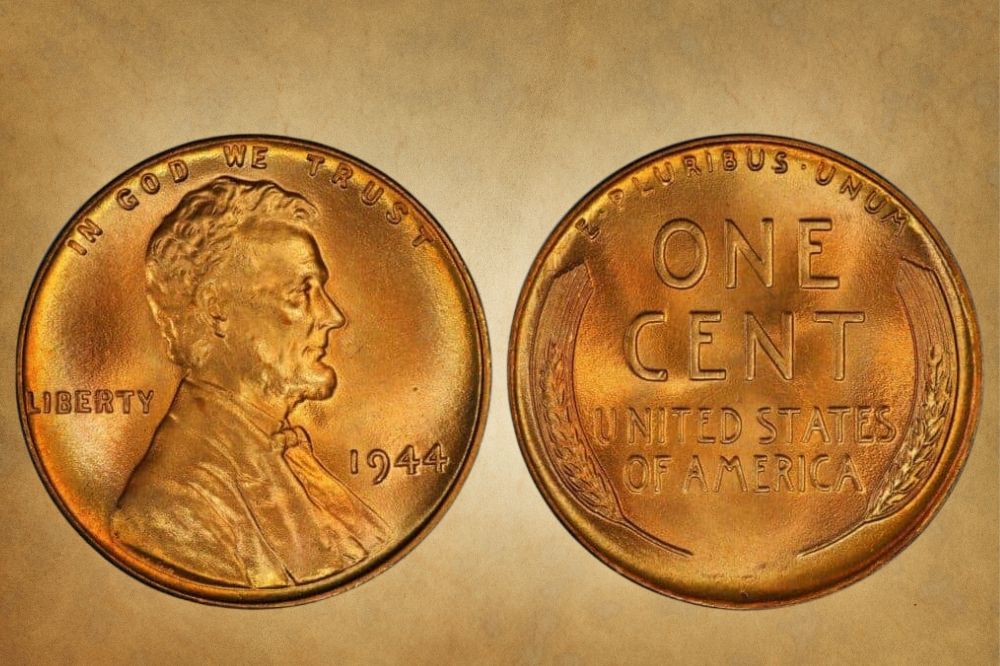
From December 1942 to December 1944, the US Mint made a series of Wartime Cents that are sometimes called War Pennies, Steelies, Zinc Cents, or Steel War Pennies. Today, we’re focusing on the coins coming out of San Francisco to verify the 1944-S Wheat Penny Value.
1944-S Wheat Penny Value Chart |
|||||
| Mint Mark | Fine | Extremely Fine | About Uncirculated | Uncirculated | Mint State |
| 1944-S Brass Wheat Penny Value | $0.11 | $0.22 | $0.39 | $0.96 | $4.52 |
| 1944-S Steel Wheat Penny Value | $0.11 | $399,637 | $551,320 | $741,587 | $1,110,923 |
1944-S Wheat Penny Value Guide
The main distinguishing factor between 1944-S Pennies is their metal composition. Most were made of brass, with 95% copper and 5% zinc, though some coins replaced the zinc with tin. For reference, earlier pennies were bronze so they contained 95% copper with a 5% mixture of tin and zinc. A couple contained a carbon steel core with zinc plating outside.
1944-S Brass Wheat Penny Value
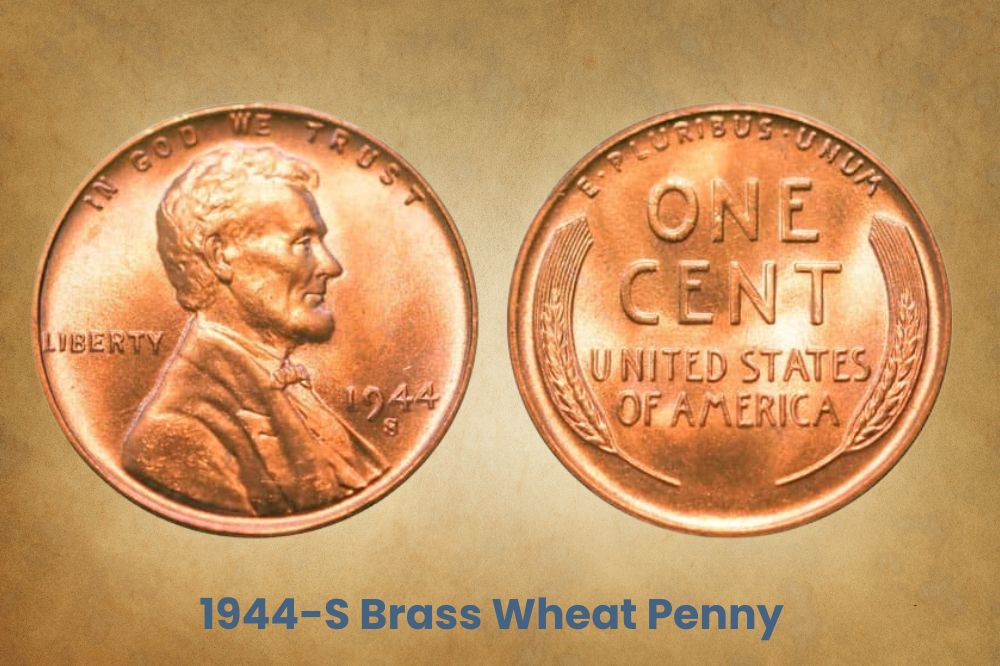
In 1944, the San Francisco Mint made 282,760,000 Brass Pennies with the S Mint Mark. In MS 67+ they can go for around $750, which still isn’t bad for a 1-cent coin, but in MS 66, that goes down to $20, and most are only worth face value. That said, in MS 67+ RD, it’s $3,000!
1944-S Steel Wheat Penny Value
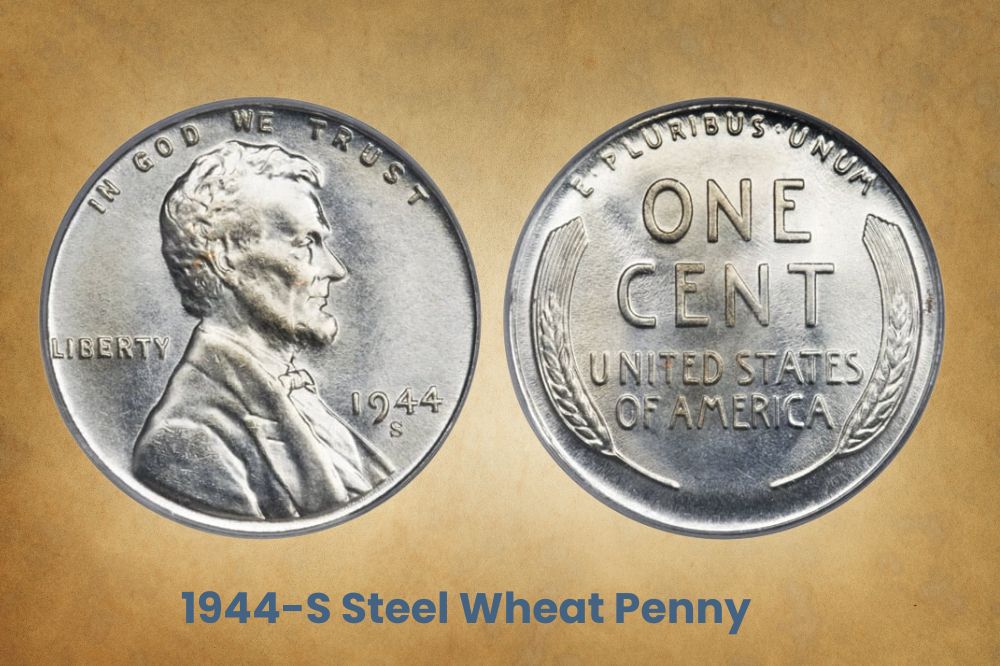
As far as we know, the San Francisco Mint only made 2 Steel Pennies in 1944. They were probably leftover discs from the 1943 Steel Pennies made in San Francisco or the 1943 Two-Franc Belgian coins made in Philadelphia. Either way, their minting wasn’t intentional, and they’re worth some serious cash! In 2021, an MS 66 sold for $408,000, but can go higher!!
Related Posts: 16 Most Valuable Wheat Penny Errors
1944-S Wheat Penny Errors
As you may know, rarity gives coins their premium value. And with only two 1944-S Steel Cents in existence, they always fetch a pretty price. But even among the more common brass pennies, verified errors can deepen the value of the coin, so let’s check out a few key flaws.
Because only two known coins exist in steel, most 1944-S errors will appear on brass cents. Incidentally, the two 1944 Steel Cents are sometimes categorized as errors in themselves because they weren’t minted deliberately. So if you see them on error lists, it’s a valid claim.
1944-S Wheat Penny Doubled-Die Errors
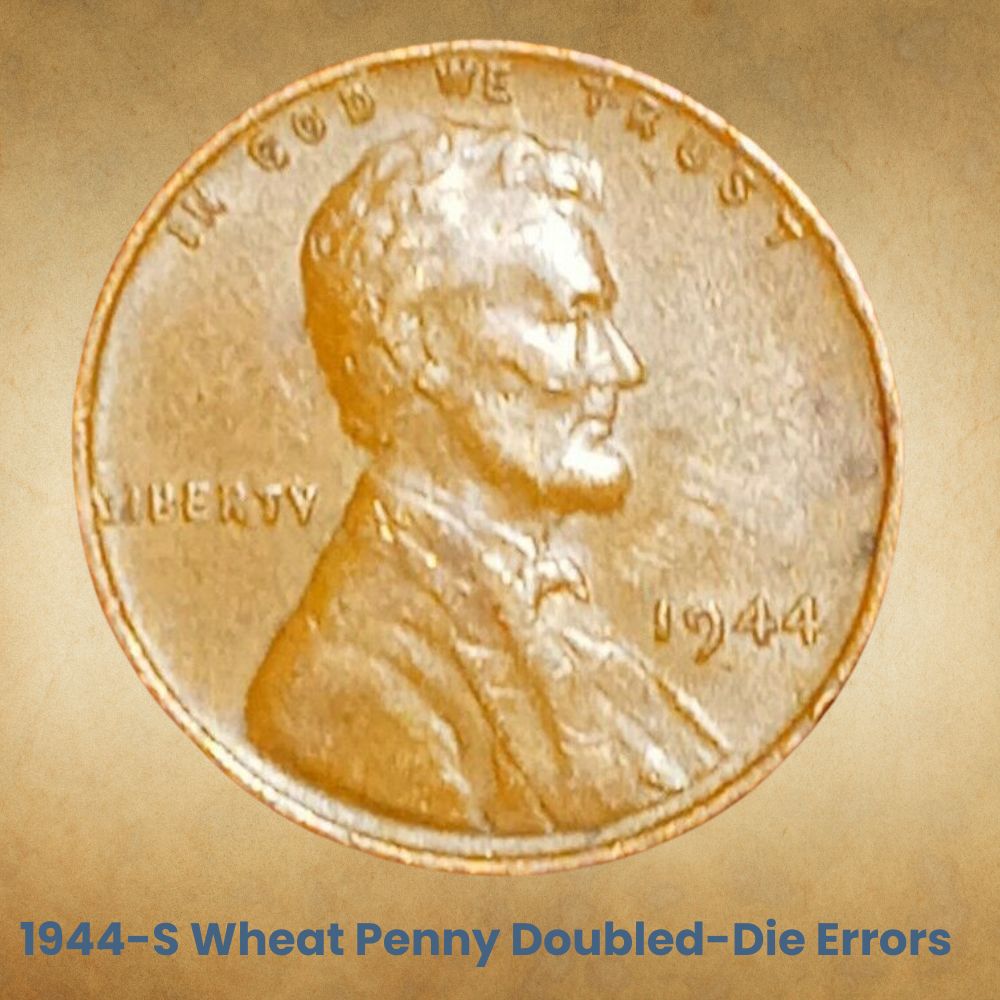
Since lots of brass pennies exist in MS 65 and MS 66, errors like DDOs and DDRs are barely worth $15 to $25. These errors happen when the die shifts between hub strikes. This causes doubling, tripling, or quadrupling on the words and numbers, or on Lincoln’s eyes and ears. But they’re still fun to find, so check your pennies with a jeweler’s loupe or coin microscope.
1944-S Wheat Penny S/S RPM Error
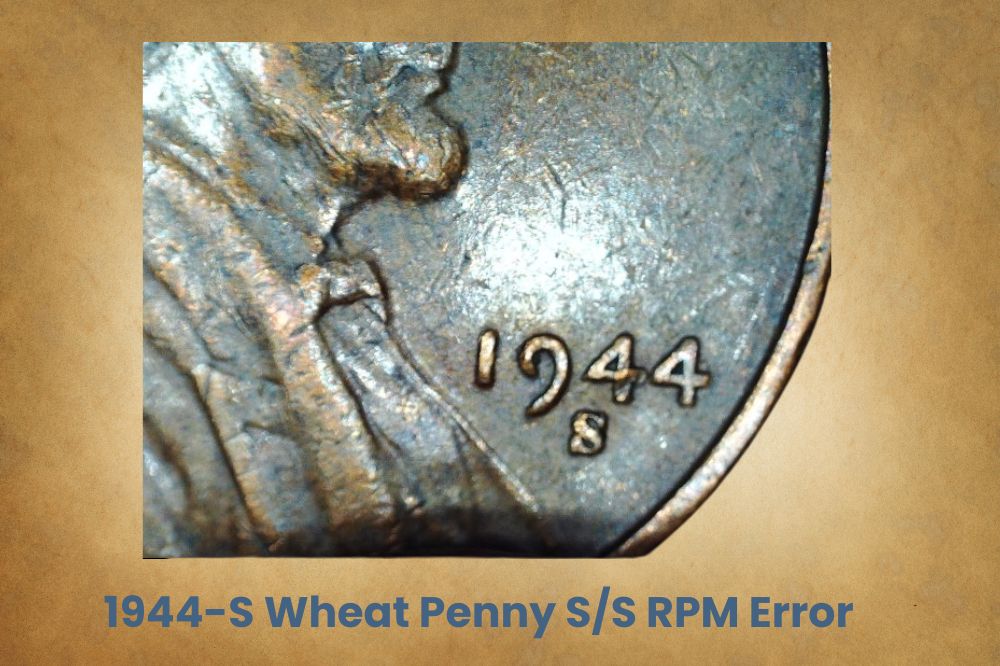
Until 1989, mint marks were placed manually using a hand-held puncheon. This process left room for errors because it wasn’t as steady as machine strikes, and sometimes the second S or D would slip slightly to the side. An S over S re-punched mint mark (written as S/S) is $6 to $12 in MS 65, but a D/S crossover to the Denver Mint is worth more. We’ll do that next.
1944-S Wheat Penny D/S RPM Error
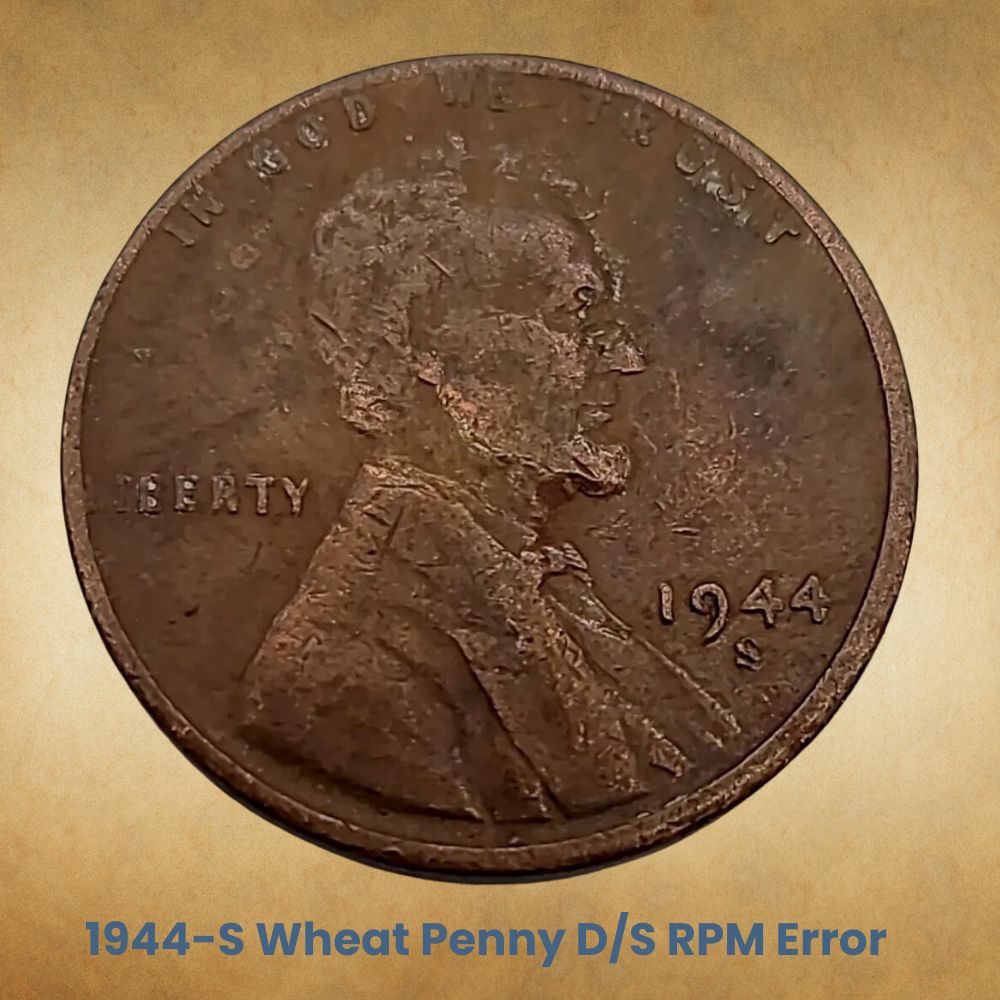
Since mint marks are added by hand, coins from one mint are sometimes transported to another mint. When pennies from the San Francisco Mint were shipped to Denver, the D Mint Mark was added, but sometimes, the S is still visible underneath. In VF 20, it’s worth $140. Ungraded, it went for $170 on eBay. But in MS 66+ RD, a D/S RPM sold for $21,000!
1944-S Wheat Penny Double Struck 60% Off-Centre
Every coin (except for SMS coins) must be struck multiple times to ensure accuracy and clarity. But sometimes, the planchet shifts between strikes, causing an off-center error. On this 1944-S Penny, the second strike was 60% to the left. It caused dramatic doubling on both sides of the coin, distorting the shape as well. In 2012, this error coin sold for $330.
1944-S Wheat Penny 15% Off-Centre
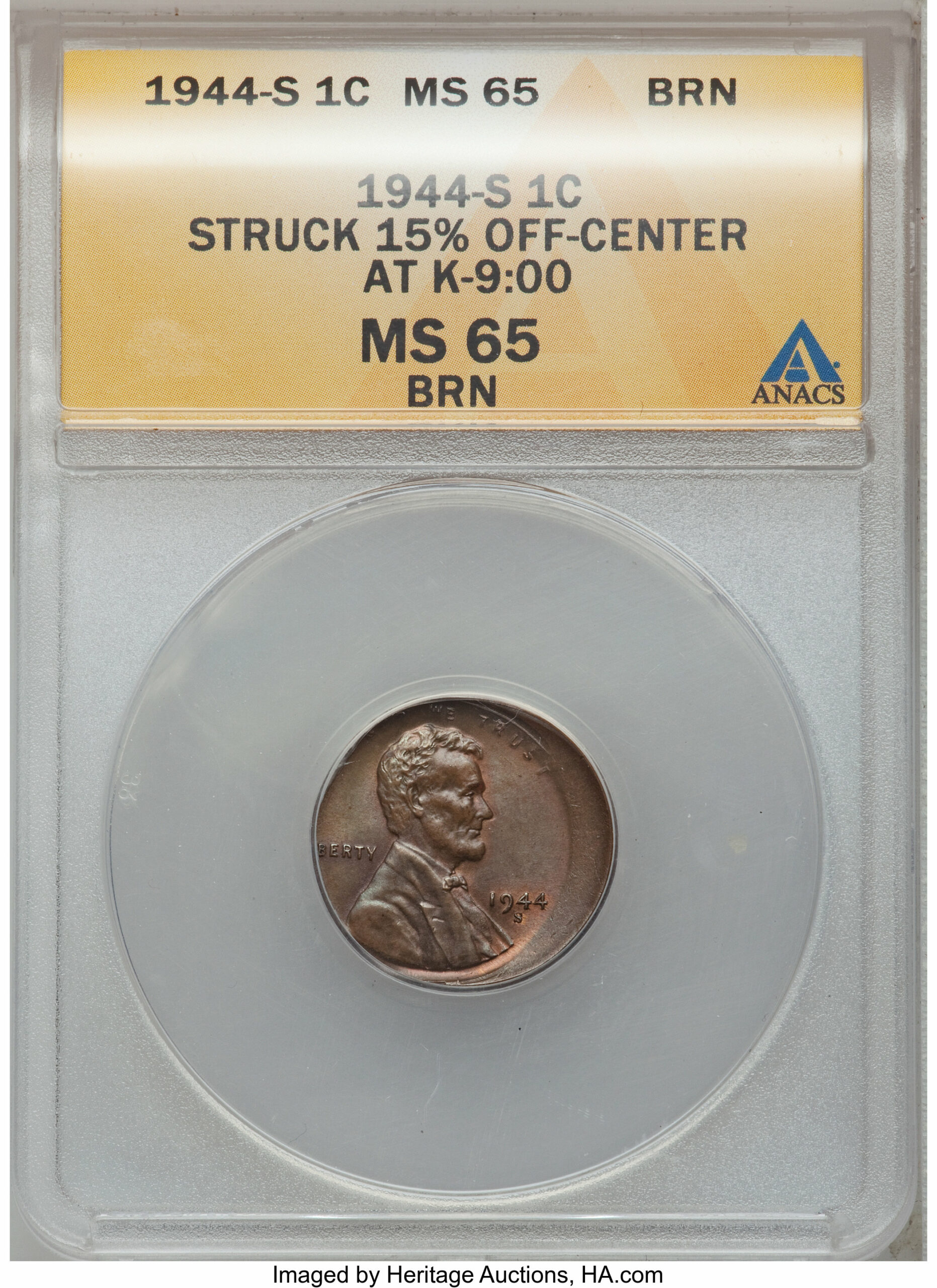
This next example was struck off-center as well, but the planchet moved before the first strike. As a result, part of the disc remained blank, towards the front right and back right. And since this penny is already in the high grade of MS 65 RD, the error penny sold for $155 in 2019. Generally speaking, the larger the percentage of misalignment, the better the price.
1944-S Wheat Penny Cud Error
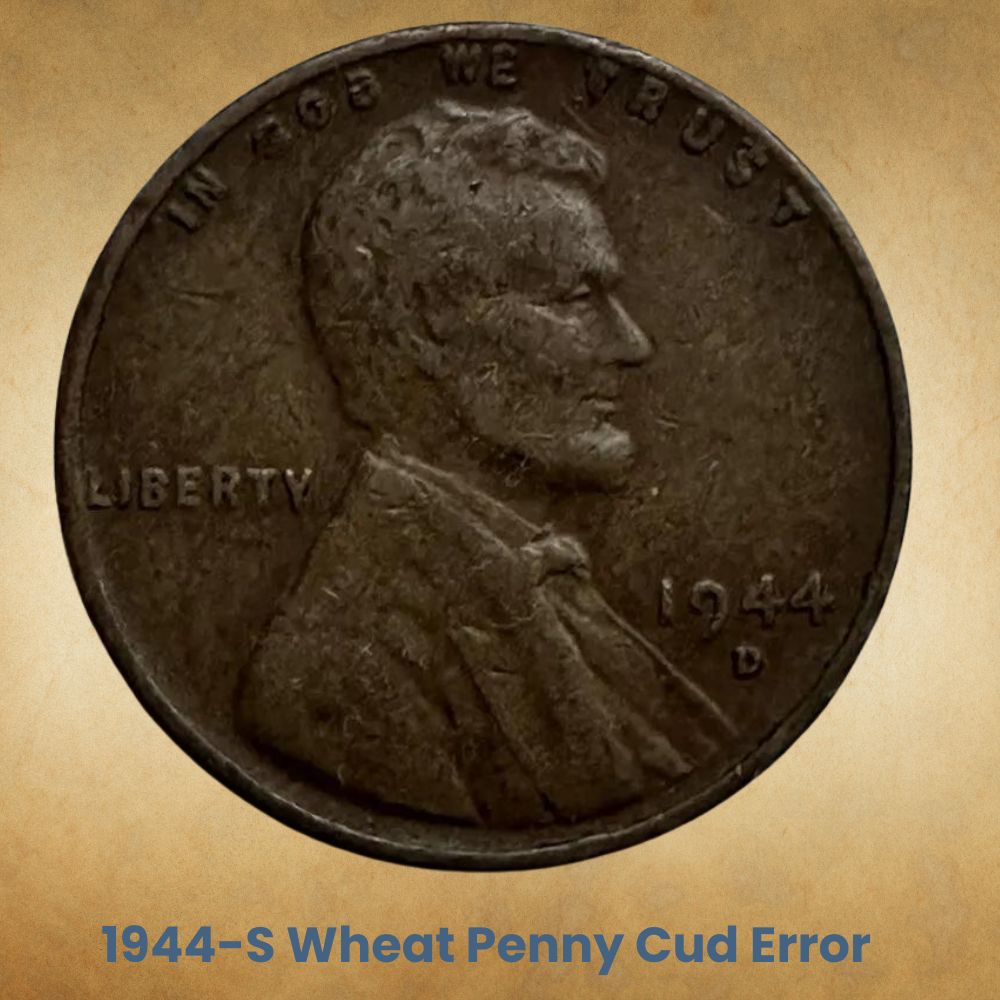
A cud error or cud die break happens toward the end of a die’s lifespan. These dies are made of steel and are quite expensive, so they’re used until their very last legs. During their last few runs through the mint, they might develop cracks and gashes that get transferred into coins. Cud errors typically look like someone scooped out the coin surface. In VF 35, it’s worth $85.
1944-S Wheat Penny D/S Double Strike 10% Off-Centre
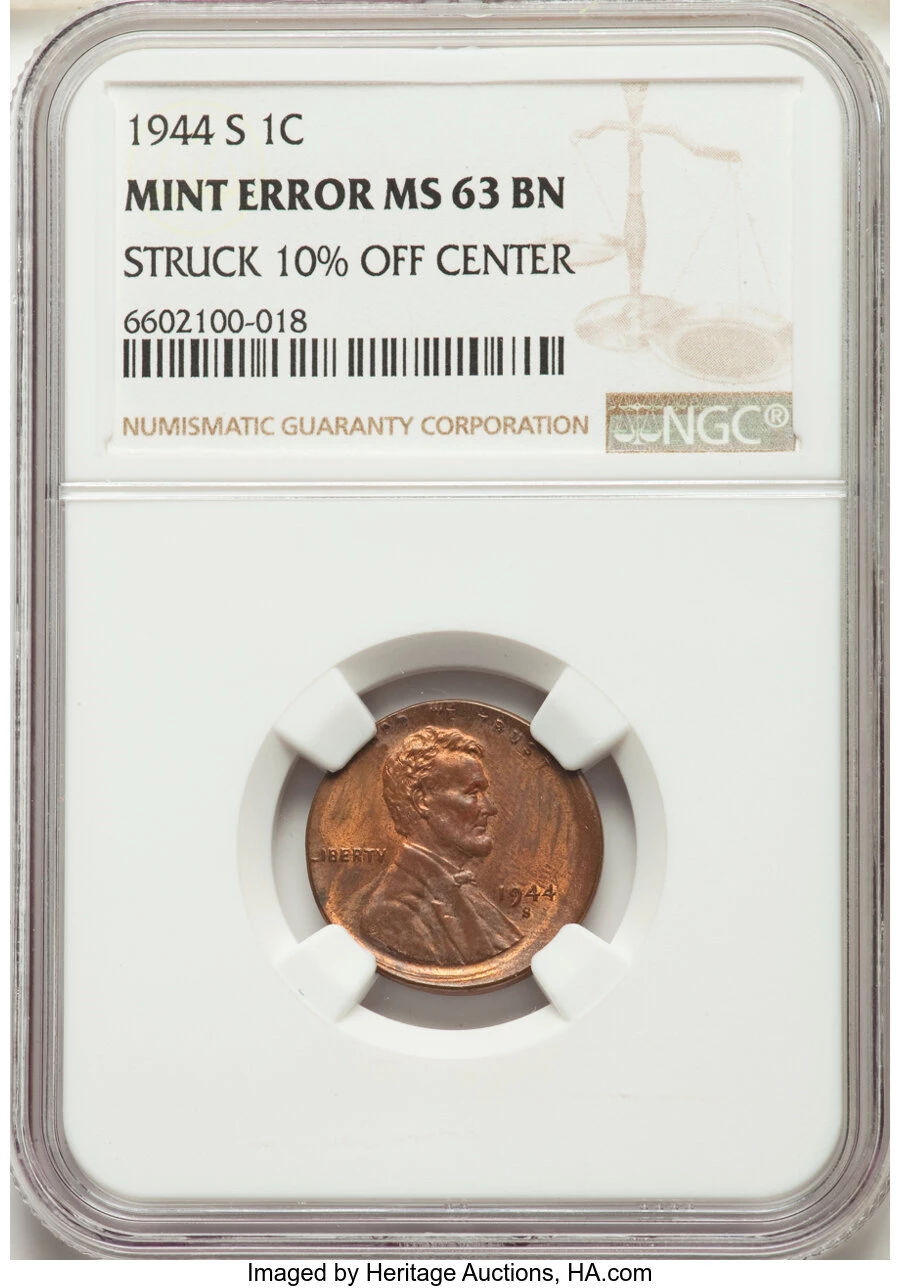
You might get lucky and bump into a coin that has more than one error. This one has a D mint mark punched over the S, but it also has a double struck error where the planchet shifted between die strikes. The second strike was 10% off-center, causing some overlapping that stamped an extra 4 on the coin. In MS 63 RB, this multi-flawed penny is worth $585.
1944-S Penny Double Struck Error
Both the die and the planchet can move around between strikes, and while these errors seem similar, they fall under different classes. A shifting blank leads to a double-struck error, and it can cause overlapping designs, collars, or edges. On this coin, a second collar appears above the first one below Lincoln’s shoulders. In MS 61 BN, this penny sold for around $55.
Related Posts: 19 Most Valuable Lincoln Memorial Penny Worth Money
History of the 1944-S Wheat Penny
Coins are made from metal sheets called planchets, which are punched into blank discs of various sizes. And 1944 is an unusual year because the mint used two main types of metal sheets. One was zinc-coated steel and the other was brass. Earlier planchets were bronze, sometimes described as French Bronze, though the moniker isn’t completely accurate…
You see, French Bronze is 91% copper, 6% zinc, 2% tin, and 1% lead. But some people use the term to refer to generic low-cost zinc statuettes that were polished to achieve a bronze-like sheen. This was actually faux-bronze, but it was derogatorily described as French Bronze. In the strictest terms, bronze is an alloy of copper + zinc while brass is a blend of copper + tin.
Most American Pennies (before 1962) were 95% copper with that final 5% being tin, so it’s all very confusing. Of course, contemporary pennies (1982 to date) are 97.5% zinc with a 2.5% coat of copper, so there’s that. But let’s go back to the earlier years of the 1-cent coin. It was first introduced in 1909, with President Lincoln on the front and durum wheat on the back.
It was the first coin to feature an American President because our 1st President, George Washington, didn’t believe in all that. He convinced his fellow Founding Fathers to ditch the colonial habit of having monarchs and leaders on coins, opting for symbolic forms of Lady Liberty. But 100 years after Lincoln’s birth, the nation agreed it was time to honor him.
The Lincoln Cent was part of a coin beautification project by President Theodore Roosevelt starting in 1904. He felt the current coins designed by mint engravers weren’t sufficiently artistic, so he asked for professional sculptors to step in and help. The first was Augustus Saint-Gaudens, succeeded by his assistants James Earle Fraser and Victor David Brenner.
Steel, Bronze, and Brass Pennies – The Zinc Takeover
Brenner designed the Lincoln Wheat Cent, borrowing ideas from circulating silver coins in France. The 1944-S Penny had the 1909 obverse and reverse, though it did have his initials, which had been scrubbed off due to some controversy in the media and at the mint. Much of the fuss was due to the ego clash between Brenner and Chief Mint Engraver Charles Barber.
But a year after Barber died in 1917, VDB reappeared on the coin in 1918. Then in 1941, we officially joined World War II, leading to all sorts of shortages. Key metals like nickel and copper were redirected to the war effort while citizens hoarded silver and gold coins for their melt value. So the mint started experimenting with various combinations of coinage metals.
They started with pattern coins in white metal, aluminum, copper-coated steel, and zinc-coated steel. Only one or two of these experimental coins were made, so verified samples are extremely valuable in secondary markets. The mint also played around with tempered glass, fiber, and plastic coins. Collectors would kill for these, so people often sell counterfeit cents.
By December 1942, Congress gave the mint official permission to coin silver-colored zinc-plated steel pennies until the end of December 1946. The formulation was a 99% carbon steel core coated with 1% steel. Other war coins had massive mint marks to identify them, so they could be taken out of circulation after the war. But war pennies had a visibly different color.
While the plan stretched until 1946, these pennies were only made in 1943, with a handful in 1942 and 1944. War Pennies had a silvery tone, but succeeding years saw brass cents (copper + tin), sometimes swapped with bronze pennies (copper + zinc). 1963 was the last year they used tin. By the 1980s, pennies had minimal amounts of copper – just 2.5% on the outside.
Related Posts: 19 Most Valuable Wheat Penny Worth Money
How to Identify 1944-S Wheat Penny?
Some 1944-S Pennies are barely worth a dollar while others can get all the way to a million. What’s the difference? Well, they’re all from San Francisco, so it’s not the mint mark! But before we dig into all that, let’s start by revisiting the physical characteristics of 1944 Cents.
For reference, any image on the coin – whether it’s a mountain or a president in profile – is known as the device. The background, which is often bare but might have backdrops in some denominations, is called the field. The wording on the coin is known as a motto or a legend.
The Obverse of the 1944-S Wheat Penny
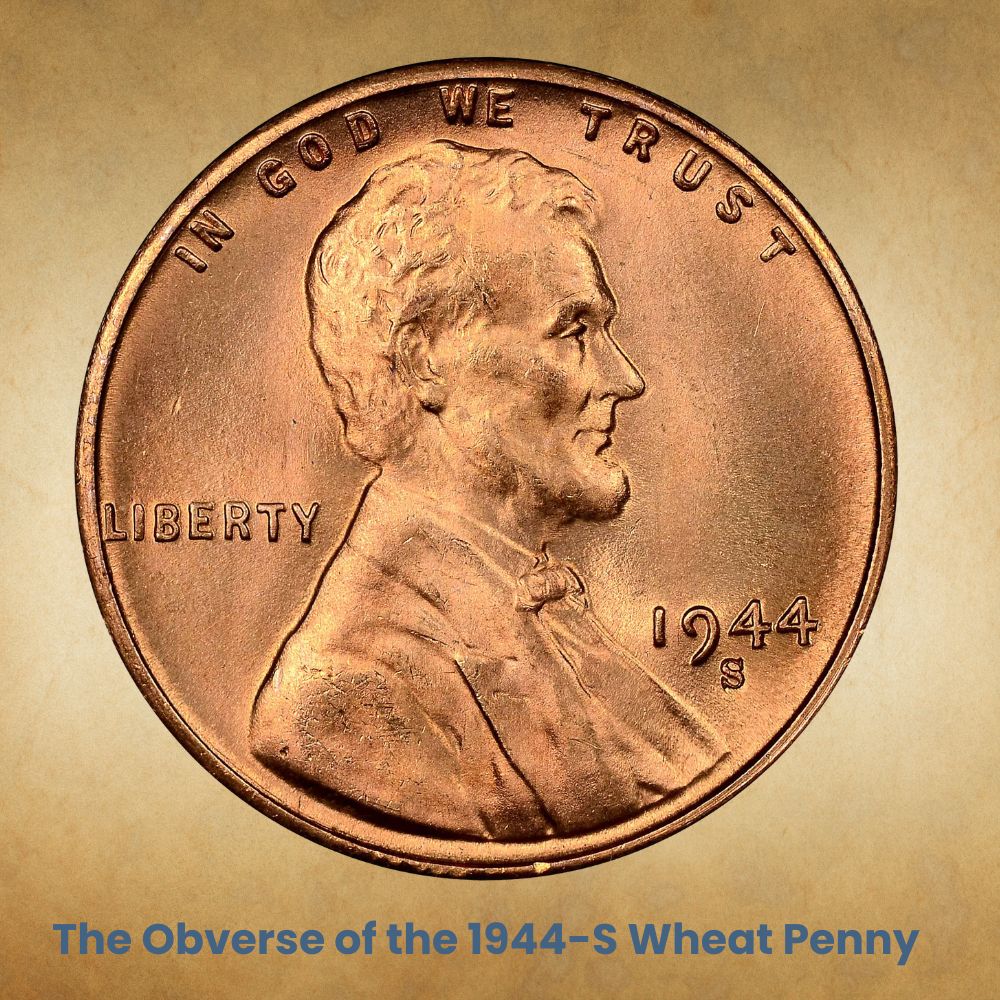
The obverse (heads side) of the 1944-S Penny bears the portrait of Abraham Lincoln facing right. The top collar reads In God We Trust, with Liberty on the right. On the left, you’ll find the S Mint Mark above the mintage date, 1944. VDB appears on Lincoln’s shoulder cut-off.
The Reverse of the 1944-S Wheat Penny
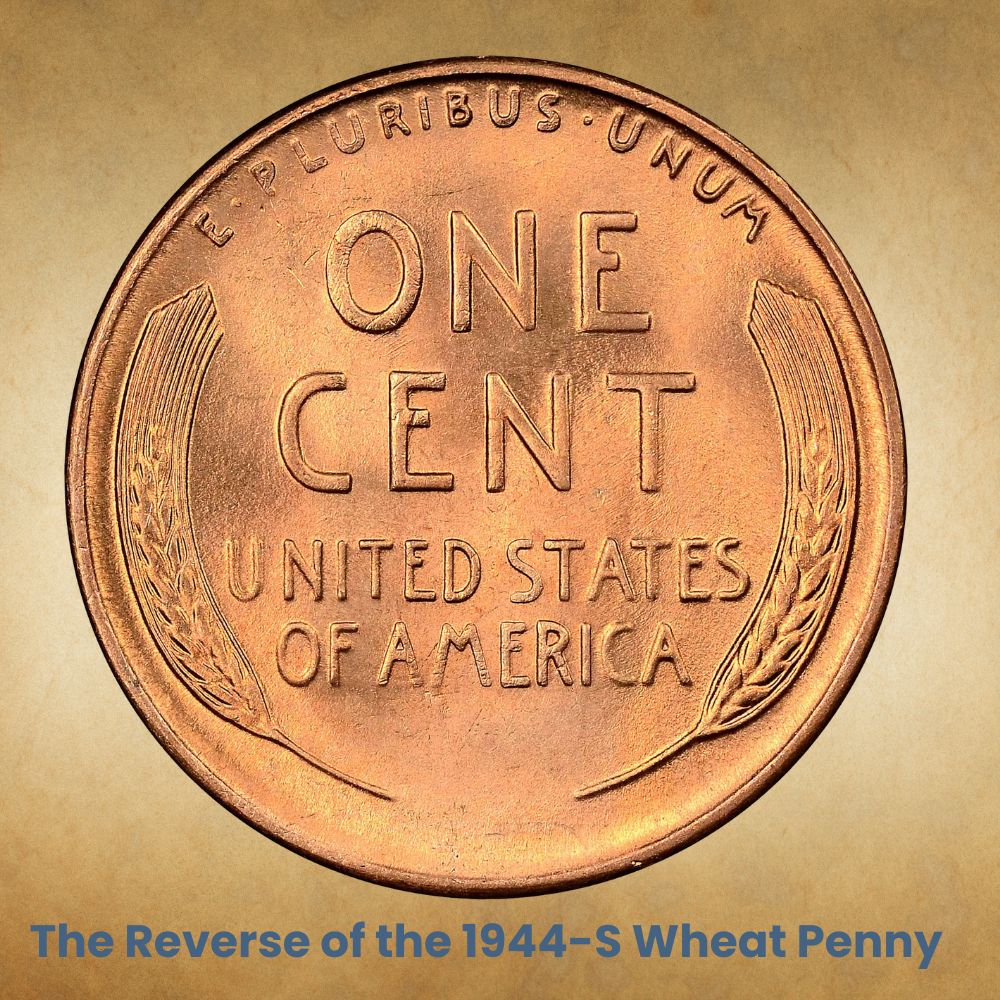
The reverse (tails side) of the 1944-S Penny has E Pluribus Unum at the top. There’s an ear of durum wheat at each side, with One Cent and United States of America running in between. The steel coins had silver-ish coloring while the brass coins had a soft, almost gilded tone.
Other Features of the 1944-S Wheat Penny
All Wheat Pennies measure 19.05mm in diameter and have a smooth, un-reeded edge. But while brass 1944-S Pennies weigh 3.11g, the two steel 1944-S Pennies are slightly lighter at 2.7g. Since these coins contained no copper, they had the silver sheen of nickels and dimes.
In fact, they were often mistaken for dimes. And they’d develop red rusty tinges from sweaty fingers. Corrosion was especially rampant along the edges where people touched the coin. Planchet sheets were made of low-grade carbon steel that was electrolyzed with zinc plating.
This meant once the discs were punched into shape, the exposed edge didn’t have as much zinc, so it rusted rather quickly. Also, the electromagnetic mix of zinc and iron left stains and spots on the coins, and the iron content triggered the magnets in coin counterfeiting devices.
How Do I Know if My 1944-S Wheat Penny is Valuable?
1944-S Steel Pennies are worth hundreds of thousands of dollars, and you can identify them with a magnet because the iron in them will react strongly while brass cents barely move. But since only 2 steel pennies exist, you’re better off looking for error coins. The 1944 D/S is worth good money, so inspect the mint mark with a coin microscope or a jeweler’s loupe.
Why is a 1944 Wheat Penny Rare?
The San Francisco Mint made about 200M Brass Pennies and only 2 Steel Pennies in 1944. These low volumes make the coin especially rare, and if you can find error coins, even better!

I have a 1944 penny that is the s Mark and it’s got a reddish tent to it and there’s 44 on the tail side of it stamped at the bottom going upward in the middle I was wondering if anybody knew what that was worth
I have one1944 weat penny and 1969
I have several 1944 pennies, one having an s mint mark with a scar on old Abe’s cheek. Shiny and in really good condition.